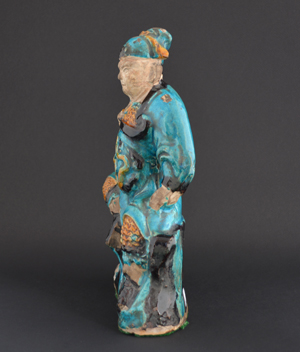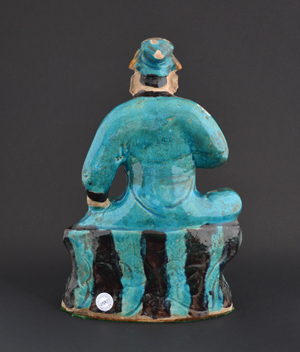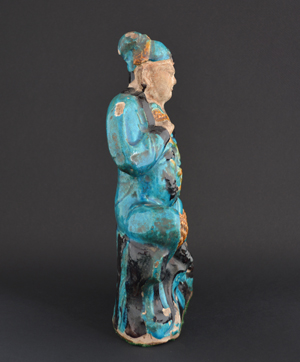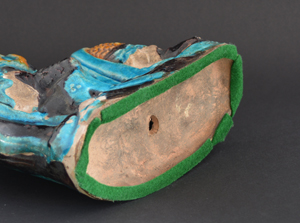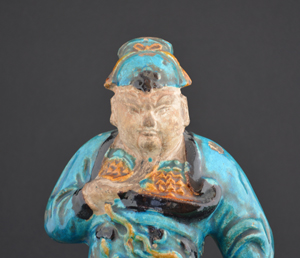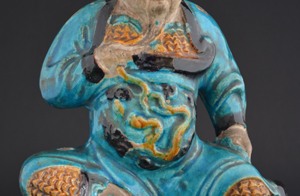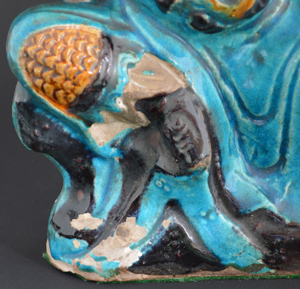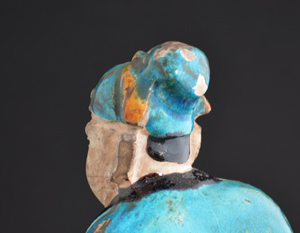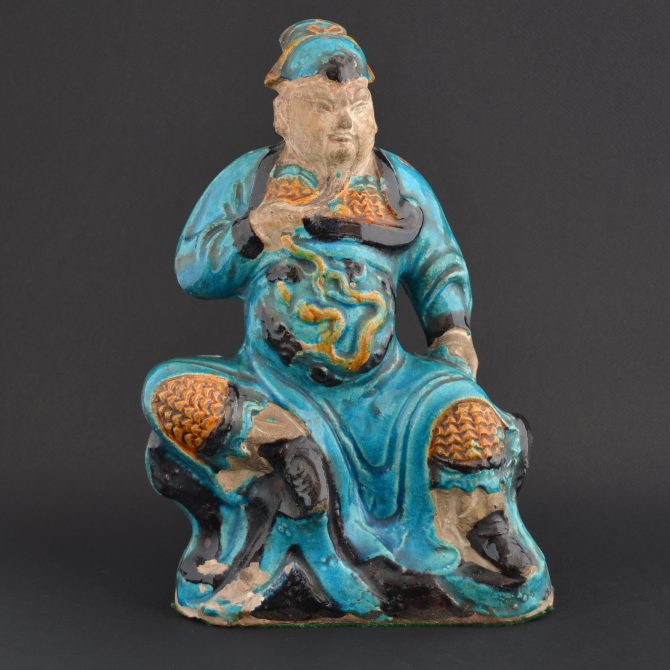
JIAJING to WANLI c.1550 – 1620 Ming Pottery
A Ming Pottery Figure of Guandi, Jiajing (1522-1566), Longqing (1567-1572) or Wanli (1573-1620), Northern China. The Moulded Figure is Decorated in Rich Coloured Lead-Glazes with areas of Bare Pottery that would have been Cold-Painted.
SOLD
- Condition
- n very good condition. The thin glaze has come away from the body in a few places, notably on the right side of Guandi below his raised leg. There are other smaller areas of glaze loss.
- Size
- Height : 28 cm (11 inches)
- Provenance
- N/A
- Stock number
- 24347
- References
- For a Ming model of Buddha on his throne of the same type of pottery but a very different model and glaze colouring dated `Wanli, 12th Year (1584), 5th Month, Auspicious Day` see our `Sold Items` number 23133.
Information
Guandi :
Guandi also called Guan Gong (Lord Guan) and Guan Di (Emperor Guan). Guan Yu (died 219), chosen name Yunchang, was a general serving under the warlord Liu Bei in the late Eastern Han Dynasty. He played a significant role in the civil war that led to the collapse of the Han Dynasty and the establishment of the state of Shu Han in the Three Kingdoms period, of which Liu Bei was the first emperor.
As one of the best known Chinese historical figures throughout East Asia, Guan`s true life stories have largely given way to fictionalised ones, most of which are found in the historical novel Romance of the Three Kingdoms or passed down the generations, in which his deeds and moral qualities have been lionised. Guan is respected as an epitome of loyalty and righteousness.
Guan was deified as early as the Sui Dynasty and is still worshipped by many Chinese people today, especially in southern China, Taiwan, Hong Kong, and among many overseas Chinese communities. He is a figure in Chinese folk religion, popular Confucianism, Taoism, and Chinese Buddhism, and small shrines to Guan are almost ubiquitous in traditional Chinese shops and restaurants. He is often reverently called Guan Gong (Lord Guan) and Guan Di (Emperor Guan). His home town Yuncheng has also named its airport after him. Information from http://en.wikipedia.org/wiki/Guan_Yu
Sancai Pottery :
Sancai (three colours) is a term used to describe low fired polychrome glazes consisting of three or sometimes four colours. These were predominately green, brown, yellow and cream. Typical Sancai pottery includes lead fluxed Tang wares.
